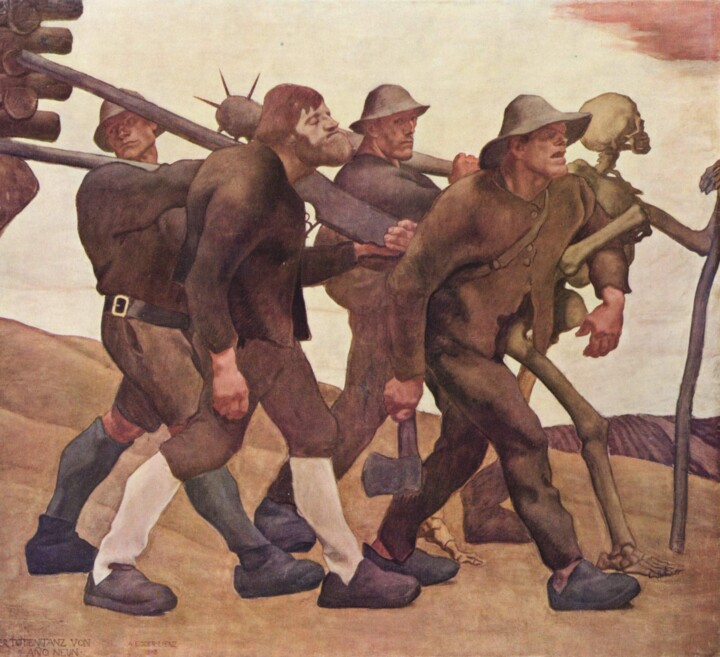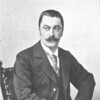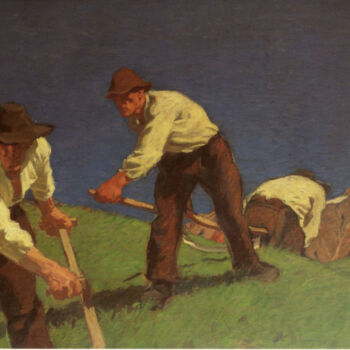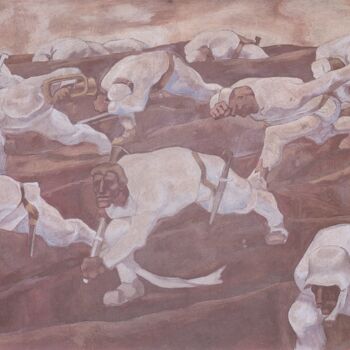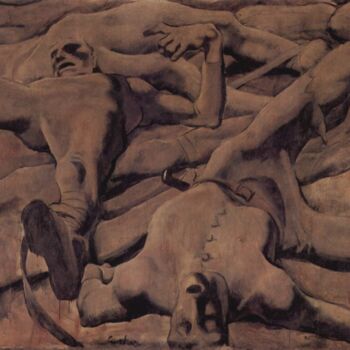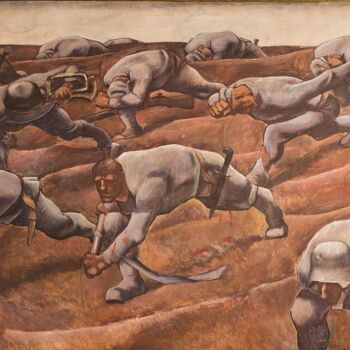The dance of death of Anno Nine (1908) Tablo Albin Egger-Lienz tarafından
Satıcı Artmajeur Editions
-
Orijinal sanat
Tablo,
Petrol
- boyutlar Yükseklik 88,6in, Genişlik 91,7in
- Çerçeveleme Bu resim çerçeveli değil
- Kategoriler Dışavurumculuk Savaş
İlgili temalar
Albin Egger-Lienz was an Austrian painter who died on November 4, 1926. He was born on January 29, 1868, and died on November 4, 1926.
He was born in Dolsach-Stribach, which is close to Lienz and used to be in Tyrol. He was born to a farm girl named Maria Trojer and a church painter named Georg Egger. As an adult, he used his father's last name plus the name of the place where he was born. He first learned about art from his father. Later, he went to the Academy in Munich, where Franz Defregger and the French painter Jean-Francois Millet influenced him.
He worked in Munich from 1893 to 1899, where he joined the local artists' group. From the mid-1890s on, he showed his work. His early works, like Ave Maria after the Battle on the Bergisel, showed scenes of peasant life and events from the Tyrolean Rebellion of 1809. (1893–1896; Tyrolean State Museum, Innsbruck).
In 1899, he married Laura Mollwald, with whom he had three children: Lorli, Fred, and Ila. He then moved to Vienna, where he worked apart from the local art scene. He didn't succeed in getting a job as a teacher at Vienna's Academy of Fine Arts. In 1900, he took part in the Universal Exhibition in Paris. His painting Feldsegen won the bronze medal.
During the first ten years of the 20th century, he spent a lot of time in the Tyrol, especially in the Otz Valley, where he worked. He became a member of the Vienna Secession in 1909. Under the influence of Ferdinand Hodler, Egger-Lienz created a formal language with a monumental way of expressing himself. He liked heroic figures in stage-like settings. Earth colors were used to paint large, sharply defined shapes that were almost all the same color.
In his last years, he made a series of paintings and frescoes for the Memorial Chapel of the Fallen in War in Lienz.
On November 4, 1926, Egger-Lienz died in St. Justina-Rentsch (Italy), South Tirol/Alto Adige, Italy, of pneumonia.
-
Milliyet:
AVUSTURYA

- Doğum tarihi : 1868
- Sanatsal alanlar: Bir Galeri tarafından temsil edilir,
- Gruplar: Çağdaş Avusturyalı Sanatçılar Bir galeri tarafından sunulan sanatçılar

